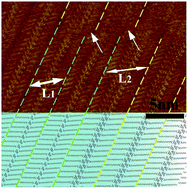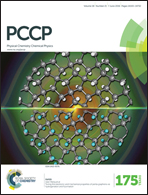Self-assembly of hydrogen-bonded supramolecular complexes of nucleic-acid-base and fatty-acid at the liquid–solid interface†
Abstract
Self-assembly provides an effective approach for the fabrication of supramolecular complexes or heterojunction materials, which have unique properties and potential applications in many fields. In this study, the self-assembled structures of stearic acid (SA) and nucleic acid base, guanine (G), are formed at the liquid–solid interface. Two main configurations, namely SA–G–SA and SA–G–G–SA, are observed and the intermolecular recognition mechanism between G and SA is proposed from the hydrogen-bonding point of view.


 Please wait while we load your content...
Please wait while we load your content...